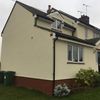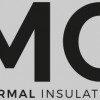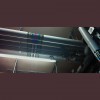
The NIA represents the insulation industry in the UK and our members include manufacturers, system designers and installers of insulation solutions for your home or business. Both the NIA and its members are fully committed to maintaining and raising standards within the insulation industry.
19 organisations representing or working within the energy efficiency and low carbon heating sector have written to Government Ministers, highlighting the importance of the continued and successful delivery of the Green Homes Grant Voucher Scheme (GHGVS).Glad to be part of the 19 organisations whose letter to Ministers re Green Homes Grant is covered in today's Guardian.
19 organisations representing or working within the energy efficiency and low carbon heating sector have written to Government Ministers, highlighting the importance of the continued and successful delivery of the Green Homes Grant Voucher Scheme (GHGVS).Glad to be part of the 19 organisations whose letter to Ministers re Green Homes Grant is covered in today's Guardian.
Services
Cavity Wall Insulation stores the heat within the inner walls, bouncing it back into the room and holding it for longer. This gives you a more even temperature and gets rid of the draughts that come down from the walls. The cavity is located between the inner and outer brickwork of the property (show picture).
The UK's housing stock is estimated at approximately 24.5 million dwellings, of that approximately 36% consist of non-cavity wall construction - solid brick, solid stone, pre 1944 timber frame and non-traditional, i.e concrete construction. Improving the thermal efficiency of solid-wall properties is an area which has massive potential for the future as this is an area where very little work has been done to date.
As much as a third of the heat you pay for could be escaping through your roof. Most loft insulation materials work by preventing the movement of heated air through the material. The Government say that you cut your energy bill by up to 20% through effectively insulating your loft. Loft insulation is located between the joists on the loft floor of your property (Roof Insulation is located between the tiles and the rafters).
Uncontrolled leakage of air through gaps in dwellings, in general results in unnecessary heat loss and discomfort to the occupants from draughts. One of these routes is through gaps around windows and doors, and draught proofing can greatly reduce this leakage.
On cold windy days, which are very common in this country, draughts can be easily identified, by holding the back of your hand close to the perimeter of the door or window you will soon locate where the cold air is coming from.However, it's not just cold windy days when you will be losing your valuable heat, as the warm air you build up inside your property is leaking through gaps all of the time.
On cold windy days, which are very common in this country, draughts can be easily identified, by holding the back of your hand close to the perimeter of the door or window you will soon locate where the cold air is coming from.However, it's not just cold windy days when you will be losing your valuable heat, as the warm air you build up inside your property is leaking through gaps all of the time.
Spray applied or injected PU foam (commonly known as spray foam) has a K-value in the range of 0.025 to 0.028w/mK and as such provides extremely high insulation values. Spray foam is produced on site using specialist machinery by fully trained, approved installers to ensure quality control and performance.
Reviews

Be the first to review National Insulation Association.
Write a Review




